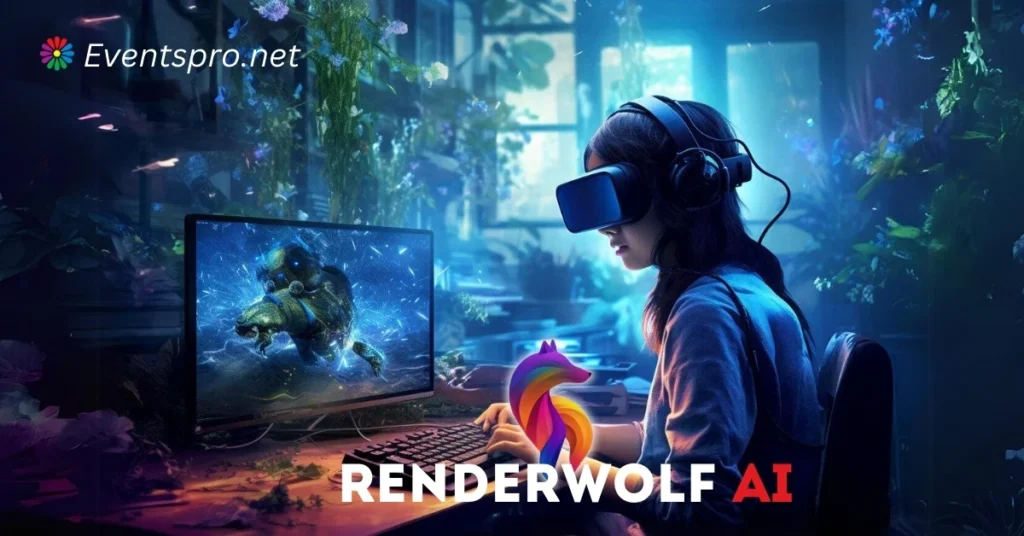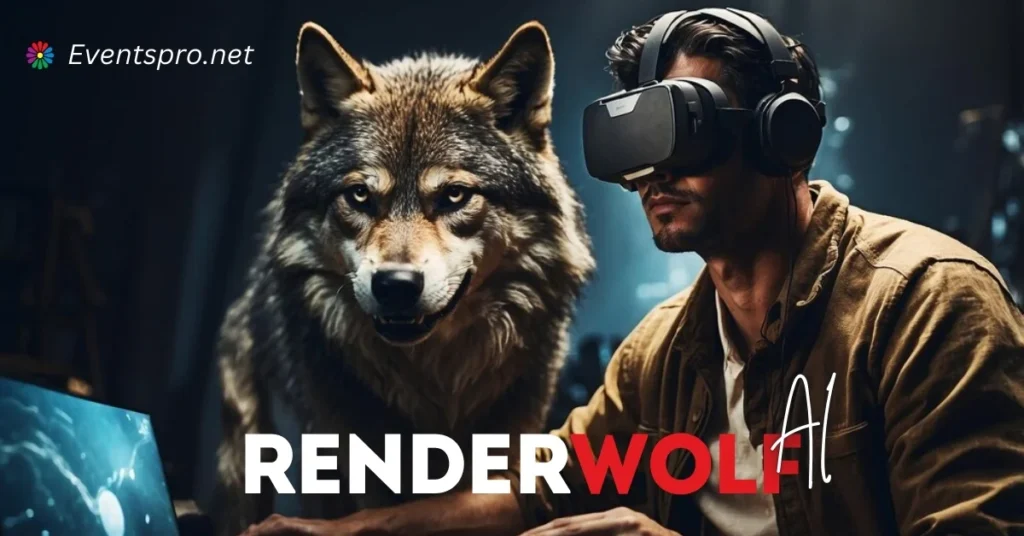
Artificial intelligence is reshaping how games are developed by offering innovative tools that streamline asset creation, automate repetitive tasks, and accelerate workflows. Game designers and studios now rely on these AI-driven platforms to enhance efficiency while maintaining creative freedom. Whether you’re an indie developer or part of a large-scale game studio, RenderWolf AI is becoming an indispensable tool for delivering high-quality, visually stunning games on tight deadlines.
Why RenderWolf AI Is Changing Game Development
The gaming industry has always embraced technological advancements, and AI is no exception. By automating time-consuming processes, AI tools empower developers to focus more on the creative aspects of game design. Whether it’s generating assets or assisting with level design, artificial intelligence provides the flexibility and speed needed to meet the demands of modern game development.
Boosting Creativity in Game Studios with Advanced Tools
While AI is often associated with automation, it can also inspire creativity. Tools powered by RenderWolf AI allow developers to explore new concepts, generate assets quickly, and iterate faster. For instance, a designer working on a fantasy game can input their initial ideas, and AI will generate various environment designs and character models that match their creative vision.
Example: A small indie game studio used AI tools to create an expansive desert world for their open-world RPG. The AI suggested variations in terrain, helped place environmental assets, and allowed the designers to explore different styles without being limited by time or resources.
Simplifying Asset Creation with AI
Cutting Down Repetitive Tasks
AI-powered tools significantly reduce the time spent on repetitive tasks like texture generation, environmental modeling, or character reskins. These tools can generate assets at lightning speed, allowing designers to focus on more critical elements like narrative design and gameplay mechanics.
Streamlining Workflows with Smart Tools
With AI-integrated platforms, game developers no longer need to worry about learning complex new systems. These tools work seamlessly with existing workflows, providing a smooth experience that enhances efficiency. Whether you’re working on character models or environmental assets, AI tools integrate easily into your current pipeline, helping teams stay on track and deliver projects on time.
Designing Game Worlds and Levels with AI Assistance
Intuitive Interfaces for Fast-Level Creation
AI tools make it easier than ever for designers to create entire game worlds. With intuitive interfaces, developers can quickly generate large, complex environments without the manual labor traditionally involved in level design. AI-driven suggestions for object placement and texture application make it easier to bring a game’s vision to life in a fraction of the time.
Example: A mid-sized game studio leveraged AI to develop several levels for a sci-fi shooter. The platform’s AI-generated rough layouts suggested object placements and provided real-time feedback on the environment’s visual cohesion, allowing designers to refine their levels quickly and efficiently.
Seamless Integration with Game Engines
AI-driven tools are flexible and can be integrated with popular game engines like Unity and Unreal. This integration ensures that all the assets and levels generated using AI can be easily incorporated into the final product, allowing developers to maintain a consistent workflow and avoid compatibility issues. This integration ensures that all the assets and levels generated using AI can be easily incorporated into the final product, allowing developers to maintain a consistent workflow and avoid compatibility issues.
Generating High-Quality Assets: AI’s Core Strength
Creating Stunning Visual Themes and Styles
AI’s machine learning algorithms can analyze existing assets and create new, visually cohesive game themes. Whether a futuristic city or a fantasy forest, AI tools allow developers to experiment with new artistic directions without creating assets from scratch.
Real-Time Rendering for Instant Feedback
Real-time rendering has become a game-changer in the development process. With AI, developers can instantly see the results of their design changes, enabling rapid iteration. This real-time feedback loop is especially valuable for designers working on tight deadlines, allowing quick adjustments and improvements.
Enhancing Game Immersion with AI-Generated Content
Generative AI for 3D Models and Worlds
Generative AI is redefining what’s possible in game design. By inputting rough concepts, designers can let AI tools generate detailed 3D models, characters, and environments that fit the game’s artistic style. This not only saves time but also allows for greater creative exploration.
Automating Textures and Reskins
AI can reskin characters and apply new textures in a fraction of the time it takes manually. This frees up artists to focus on the finer details while AI handles most of the repetitive work. Artists can focus on the finer details, while the AI handles the bulk of the repetitive work, such as generating variations of character skins or environmental textures.
Example: A popular mobile game company used AI-driven tools to reskin characters for a seasonal update. This allowed the team to refresh their game’s visual appeal in days rather than weeks and gave players fresh content without long delays.
Meeting Tight Deadlines with AI-Driven Automation
AI tools can be a lifesaver in an industry where deadlines can make or break a project. By automating asset creation and testing, developers can deliver on time without compromising quality. Game studios can rely on AI to meet the demands of modern game development schedules and ensure that their projects are released without delays.
Supporting Live Operations and Real-Time Updates
Live operations (Live Ops) are an integral part of maintaining modern games, and AI helps streamline these efforts by allowing developers to push new content and updates with minimal effort. Whether creating new assets for an in-game event or fixing bugs, AI can help teams stay on top of their Live Ops duties and keep players engaged.
Collaborative Workflows Made Easy with AI
Enhancing Team Collaboration Through Automation
AI tools allow teams to work together more efficiently by providing real-time collaboration features. Artists, designers, and developers can all interact with the same project simultaneously, offering feedback and making real-time changes. This collaborative environment boosts efficiency, helping teams meet deadlines without sacrificing creativity.
Real-World Case Studies: AI in Action
AI-driven tools have already made a significant impact in the gaming world. For example, a AAA studio working on an action-adventure title used AI to generate characters and environments, which reduced their overall development time by 30%. Another mobile game company used AI to automate live event updates, ensuring fresh content was available without disrupting the core team’s focus on larger updates.
AI vs Traditional Game Development Tools
While traditional tools still have their place in the industry, AI platforms are quickly becoming essential for modern game development. Traditional tools often require manual effort, especially when generating assets and creating environments. In contrast, AI offers faster, more efficient solutions that reduce the workload on developers and free up resources for more creative tasks.
The Developer’s Experience Using AI Tools
One of the most important aspects of AI tools is how user-friendly they are. Designed with the developer in mind, these platforms simplify complex tasks, provide real-time feedback, and improve productivity. The learning curve for developers new to AI is minimal, and the benefits far outweigh the initial setup time.
Creating Immersive Experiences with RenderWolf AI
RenderWolf AI isn’t just about saving time and enhancing the player experience. AI-generated assets can create more detailed and immersive worlds, making games feel more alive. By automating the more repetitive parts of game design, AI allows developers to focus on crafting memorable, immersive experiences that captivate players.
The Future of AI in Game Design
As AI continues to evolve, its role in game development will only grow. From automating more complex design tasks to generating entire game worlds from simple prompts, the future of AI in the gaming industry is full of exciting possibilities. Game studios that embrace AI will be at the forefront of this evolution, leading the charge in creating innovative, high-quality games more efficiently than ever before.
Conclusion
RenderWolf AI tools are revolutionizing game development, allowing studios to streamline asset creation, enhance collaboration, and create immersive game worlds faster than ever before. Whether automating textures, generating 3D models, or providing real-time feedback, these AI tools offer endless possibilities for creativity and efficiency. As the gaming industry evolves, AI will remain a central tool for developers looking to push the boundaries of what’s possible in game design.
FAQs:
How is AI improving game development?
AI is helping game developers by automating repetitive tasks, generating high-quality assets, and speeding up the overall design process, allowing for greater creativity and efficiency.
Can AI be integrated with popular game engines like Unity or Unreal?
Yes, AI-powered tools easily integrate with major game engines, making it simple for developers to incorporate AI-generated assets and environments into their projects.
What types of assets can AI generate for games?
AI can generate various assets, including 3D models, textures, environments, and character reskins, all tailored to the game’s artistic style.
How does AI help with live operations in games?
AI simplifies live operations by automating the creation of new content and updates, allowing developers to push fresh content to players more efficiently.
What’s the future of AI in game design?
AI will continue to advance, offering even more powerful tools for game developers to create immersive, high-quality games with less manual effort and more creative freedom.

